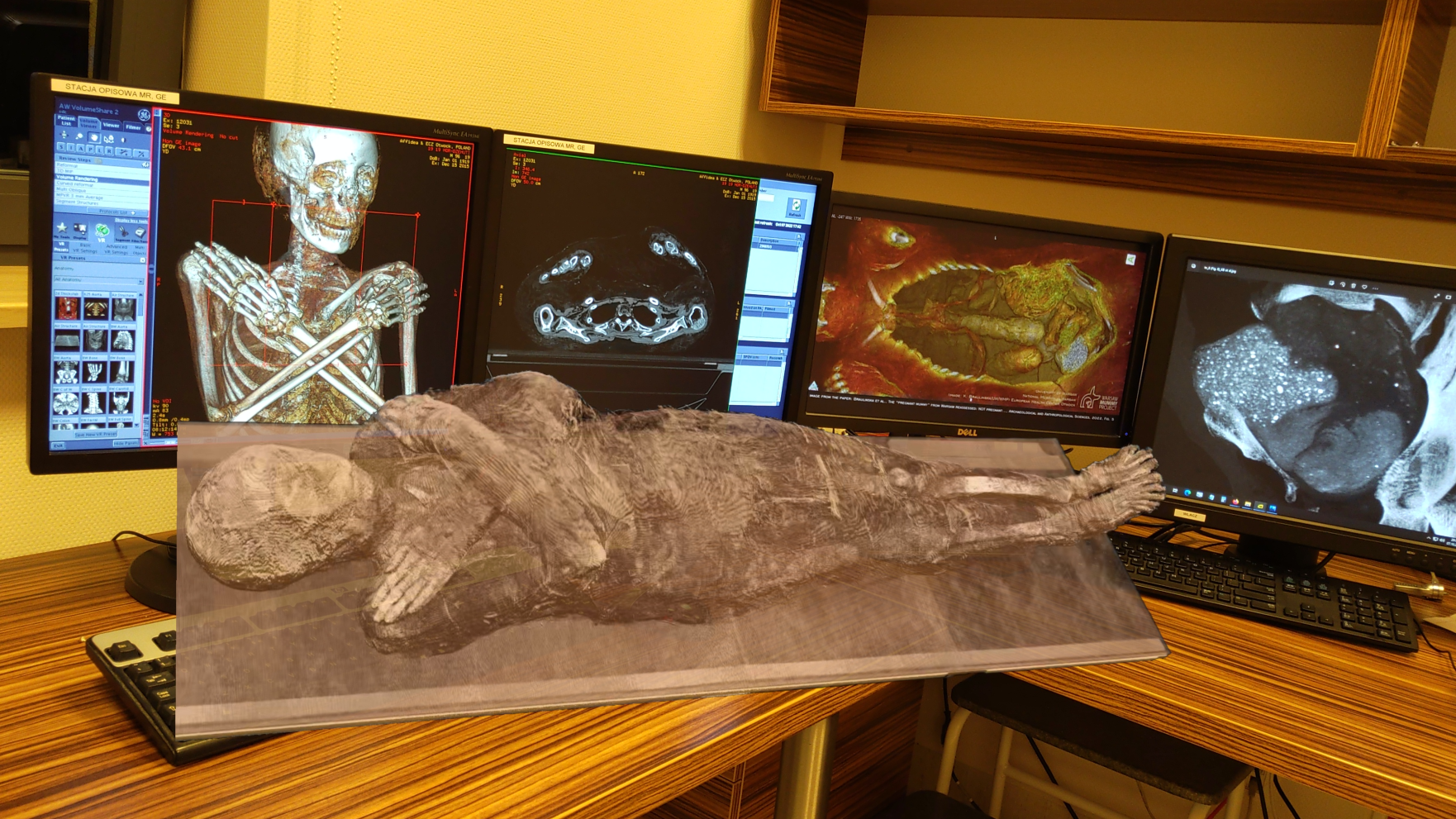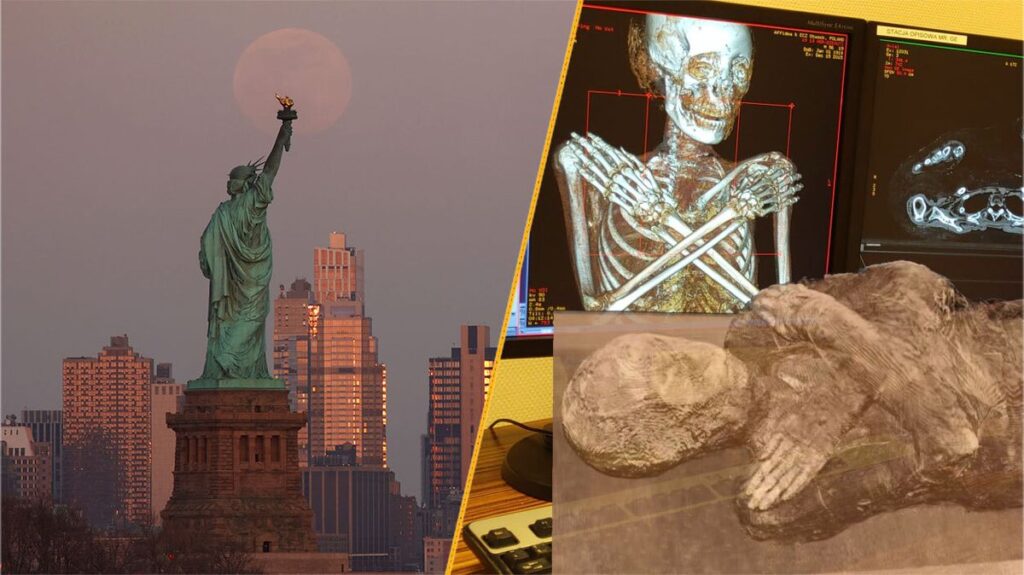This week, Earth witnessed a stunning spectacle not seen since 2022 — a total lunar eclipse. This celestial game of hide-and-seek treated skywatchers to the spectacular sight of our neighbor turning a beautiful shade of red, in what is commonly called a “blood moon.”
This unusual coloring happens during a total lunar eclipse due to a phenomenon called Rayleigh scattering, which causes some wavelengths of light to scatter more than others. During a total lunar eclipse, Earth perfectly blocks the sun’s rays, but light bends around the edge of our planet, through the atmosphere. There, particles in the atmosphere scatter the shorter-wavelength blue light, leaving the longer orange and red wavelengths to cover the moon in their distinctive hue.
If you missed the breathtaking sight, you may have another chance to see a total lunar eclipse this year, on Sept. 7-8. However, the best views will be in Asia, with North America largely untouched. Until then, enjoy these lovely blood moon photos from this week, or try our moon quiz to see how well you know our lunar neighbor.
A ‘pregnant’ mummy with ‘cancer’

In 2021, researchers revisited a first-century-B.C. mummy that had been discovered in the Egyptian city of Luxor (ancient Thebes) and moved to the University of Warsaw in 1826. The team of experts concluded that, contrary to previous belief, the mummy wasn’t a male priest but a woman in her 20s. Not only that, but she was 6.5 to 7.5 months pregnant and was experiencing a potentially fatal nasopharyngeal cancer in her skull — or so they thought.
At the time, other experts disagreed about what X-ray and CT scans revealed within the abdomen of the mummy, dubbed the “Mysterious Lady.” Instead, they suggested it contained embalming packs. Now, an analysis of more than 1,300 raw CT scans of the mummy has added further support for this view.
The researchers behind the new study found that the object the earlier research team thought was a “pickled” fetus was actually part of the embalming process and that there was no clear evidence of cancer in the mummy. Instead, the damage to the skull likely came when the brain was removed during the embalming process, in which a curved metal implement was used to pull the brain through the nostrils.
Discover more archaeology news
—2,200-year-old grave in China contains ‘Red Princess of the Silk Road’ whose teeth were painted with a toxic substance
—15th-century gold and silver coins discovered by amateur metal detectorists in Scotland
—Pet cats arrived in China via the Silk Road 1,400 years ago, ancient DNA study finds
Pi day

Originally defined as the ratio between the circumference of a circle and its diameter, pi — written as the Greek letter π — appears throughout mathematics, including in areas that are completely unconnected to circles, such as chemistry, physical sciences and medicine.
Pi belongs to a huge mathematical group called irrational numbers, which go on forever and cannot be written as fractions. Scientists have calculated pi to 105 trillion digits, although most of us are more familiar with the approximation 3.14. But how do we know that pi is an irrational number?
—Pi Day quiz: How much do you know about this irrational number?
How metformin works

Metformin, a drug used to treat type 2 diabetes, has been prescribed by doctors since the 1990s. Despite its efficacy, there has been one lingering puzzle: How does it work?
Now, a new study takes us one step closer to understanding the key mechanism in how metformin lowers blood sugar. The drug triggers the body to expel glucose from the bloodstream and into the intestines. There, bacteria feed on carbohydrates to make compounds that help to control blood sugar levels.
Keeping glucose out of circulation by directing it to the gut might directly lower blood sugar levels, but scientists told Live Science they think this explains only part of metformin”s therapeutic effects.
Discover more health news
—Epigenetic ‘scars’ on the genome can be passed down by grandmothers, study finds
—What are POLG diseases, the rare genetic conditions that starve cells of energy and afflicted the late Prince of Luxembourg?
—East Asians who can digest lactose can thank Neanderthal genes
Also in science news this week
—‘Winter is far from over’: Polar vortex reversal could bring springtime snow to US
—52-foot-high ‘megaripples’ from asteroid that killed the dinosaurs mapped deep beneath Louisiana in 3D
—Scientists spot water molecules flipping before they split, and it could help them produce cheaper hydrogen fuel
—340 million-year-old ‘nail tooth’ shark found deep inside Mammoth Cave in Kentucky
SPHEREx launch

This week, NASA launched the SPHEREx telescope into orbit. The new infrared space telescope is set to rival the James Webb Space Telescope in its unprecedented view of our universe.
Once SPHEREx is fully online, the space telescope will scan the entire night sky four times, using 102 infrared color sensors, enabling it to collect data from more than 450 million galaxies during its planned two-year mission. This dataset will give scientists key insight into some of the biggest questions in cosmology, such as how galaxies take shape and evolve over time, where water originated and how our universe came to be.
Something for the weekend
If you’re looking for something a little longer to read over the weekend, here are some of the best long reads, book excerpts and interviews published this week.
—‘It is a dangerous strategy, and one for which we all may pay dearly’: Dismantling USAID leaves the US more exposed to pandemics than ever (Opinion)
—Dinosaurs: Facts about the reptiles that roamed Earth more than 66 million years ago (Fact file)
—‘A political division, not a physical one, determined who got measles and who didn’t’: Lessons from Texarkana’s 1970 outbreak (Book extract)
Want more science news? Follow our Live Science WhatsApp Channel for the latest discoveries as they happen. It’s the best way to get our expert reporting on the go, but if you don’t use WhatsApp we’re also on Facebook, X (formerly Twitter), Flipboard, Instagram, TikTok, Bluesky and LinkedIn.
